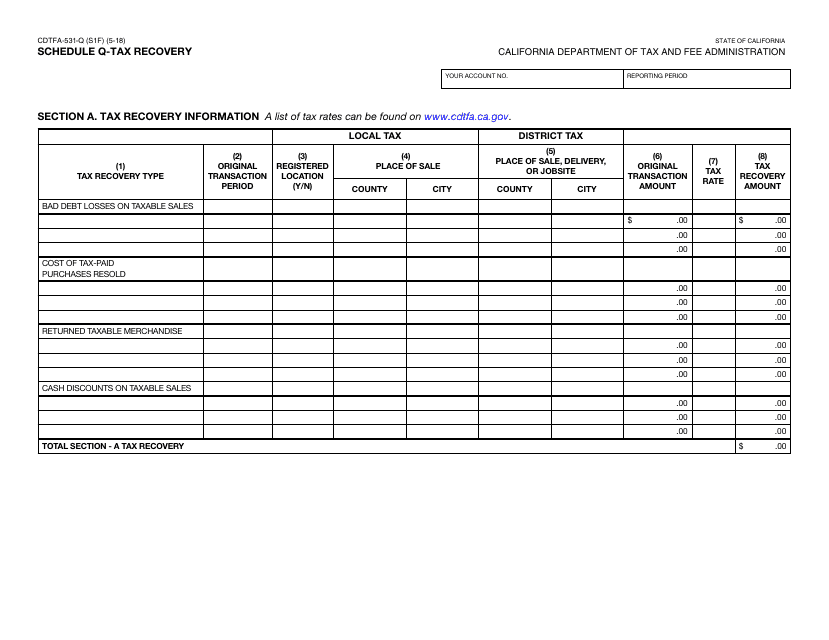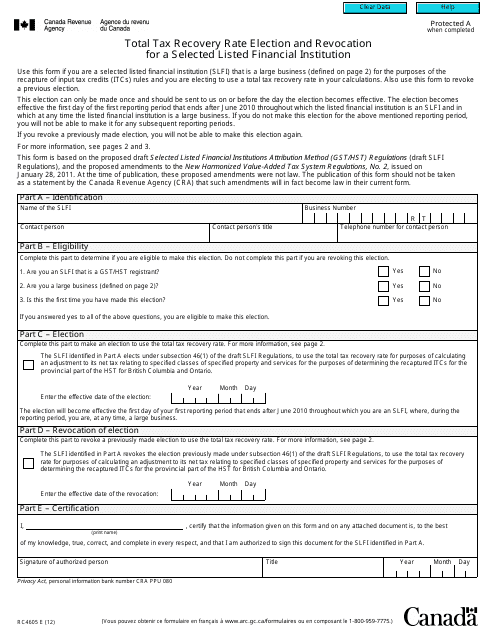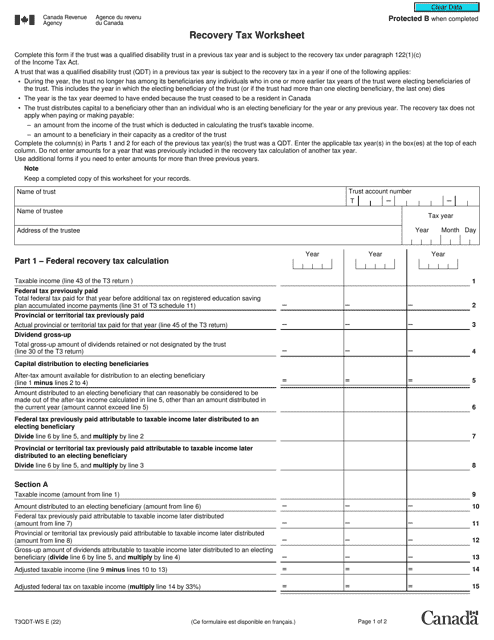Tax Recovery Templates
Tax Recovery (also known as Recovery Tax or Tax Recovery) is a critical aspect of financial management for individuals and businesses alike. This process involves obtaining refunds, credits, or adjustments for overpaid taxes, ensuring that taxpayers are not burdened with unnecessary financial strain. The goal of tax recovery is to maximize savings and minimize tax liabilities by taking advantage of available deductions and exemptions.
At its core, tax recovery empowers taxpayers to reclaim excess payments made to tax authorities. By leveraging tax laws and regulations, individuals and businesses can explore various avenues to recover what is rightfully theirs. These avenues include filing claims for tax credits, rebates, or refunds, as well as seeking opportunities for deductions and exemptions.
In Canada, taxpayers can utilize forms such as the Form RC4605 Total Tax Recovery Rate Election or Revocation for a Selected Listed Financial Institution or the Form T1213(OAS) Request to Reduce Old Age Security Recovery Tax at Source to initiate the tax recovery process. These documents play a crucial role in facilitating necessary communication and providing relevant information to the tax authorities.
Similarly, in the United States, taxpayers may need to complete forms like the Form CDTFA-531-Q Schedule Q Tax Recovery (California) to initiate the tax recovery process and secure refunds or credits. These forms allow individuals and businesses to provide detailed information about their tax liabilities, ensuring accurate and efficient processing.
Tax recovery is an integral part of any comprehensive financial strategy. It ensures that taxpayers have access to the resources they need to thrive and prevents undue financial burdens. By leveraging the appropriate documentation and utilizing the various avenues available, individuals and businesses can navigate the complex landscape of tax regulations and maximize their savings.
Documents:
8
This form is used for reporting tax recovery in California.
This form is used for making an election or revocation for the total tax recovery rate for a listed financial institution in Canada.




